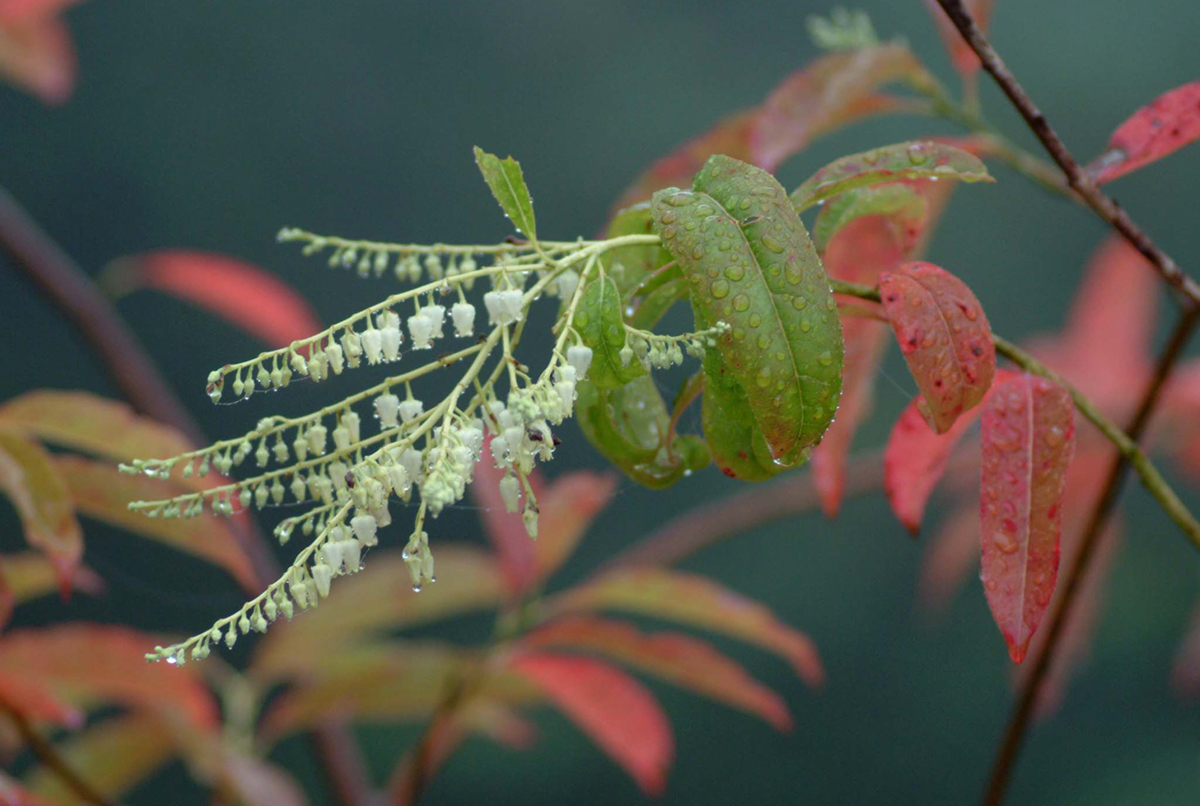
Sourwood. Photo by Joye Ardyn Durham
Compleat Naturalist
By Laura & Hal Mahan
“Chickens a-crowin’ on
Sourwood Mountain,
Hey-ho diddle-um day.
So many pretty girls I can’t count ‘em,
Hey-ho diddle-um day…”
~ Popular old-time mountain song
Some of us measure the days of the year by what flowers are in bloom, especially those that offer up sweet fragrance. In early July, we can stand out on our deck in the evening and drink in the wonderful fragrance coming from the wooded slope below. We are blessed here in the Southern Appalachians to live in the only region in the world where the sourwood tree grows.
The sourwood (Oxydendrum arboreum) blooms with its distinctive, long, narrow flower stalks swooping down from the ends of its branches. The small, white, blueberry-like flowers are heavy with fragrance to attract insect pollinators, mainly honeybees, that take the nectar back to the hive. Due to the relatively short bloom season, beekeepers have a small window of time to position their bee hives close to blooming sourwoods. In any given year, a shortage of rain or lower than normal temperatures can impact the amount of honey available that season.
Sourwood honey is perhaps more familiar to most people in the Southern Appalachians than the tree itself. It is extra-light to light amber in color and extremely aromatic, with a distinctively rich honey flavor.
This beautiful tree is a member of the botanical family Ericaceae (pronounced air-ih-kay-see-ee), or heath family. Relatives include rhododendrons, mountain laurel and blueberry. Sourwoods get their name from the bitter taste of their leaves, caused by oxalic acid in the leaf tissues, but sourwood does not have sour wood! Other common names for this tree are lily-of-the-valley tree and sorrel tree.
There are many historical accounts of Native Americans and early settlers making use of sourwood leaves, sap and inner bark to treat a variety of ailments, including rubbing on itchy skin and chewing to alleviate mouth sores. But beware! If you have an interest in medicinal properties of wild plants, it is fun to learn about historical uses, but best not to experiment on yourself without proper knowledge, as relatives and sourwood look-alikes may have serious poisons in their various plant parts.
The hot and lazy days of August bring trees and shrubs bearing the fruits of earlier blooms. It is during this month that the Sourwood Festival takes place every year in Black Mountain. This year it will be August 11–12, when the 41st annual festival will bring more than 200 vendors, along with food and entertainment.
With our record rain this spring and warm summer temperatures, it should be a banner year for sourwood honey!
Laura and Hal Mahan are owners of The Compleat Naturalist, located at 2 Brook Street in the Historic Biltmore Village. To learn more, visit compleatnaturalist.com or call 828.274.5430.






